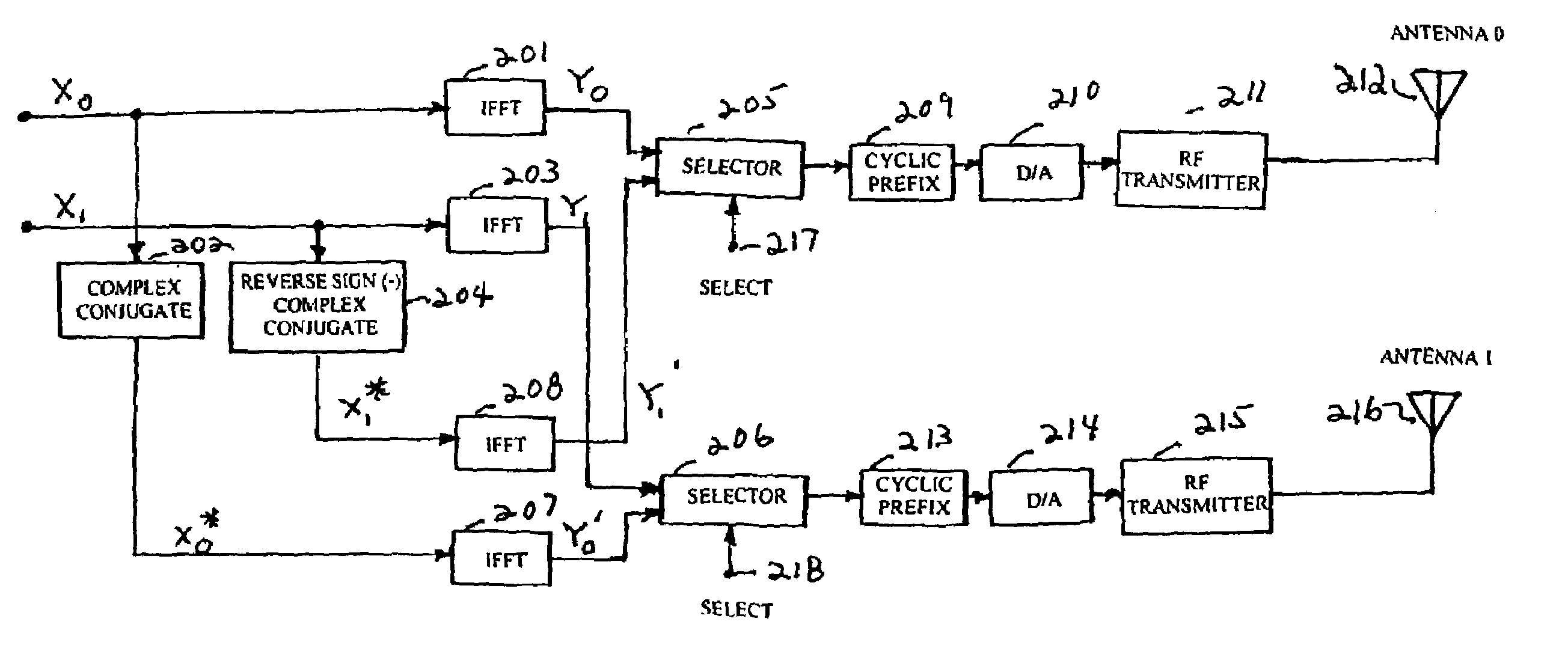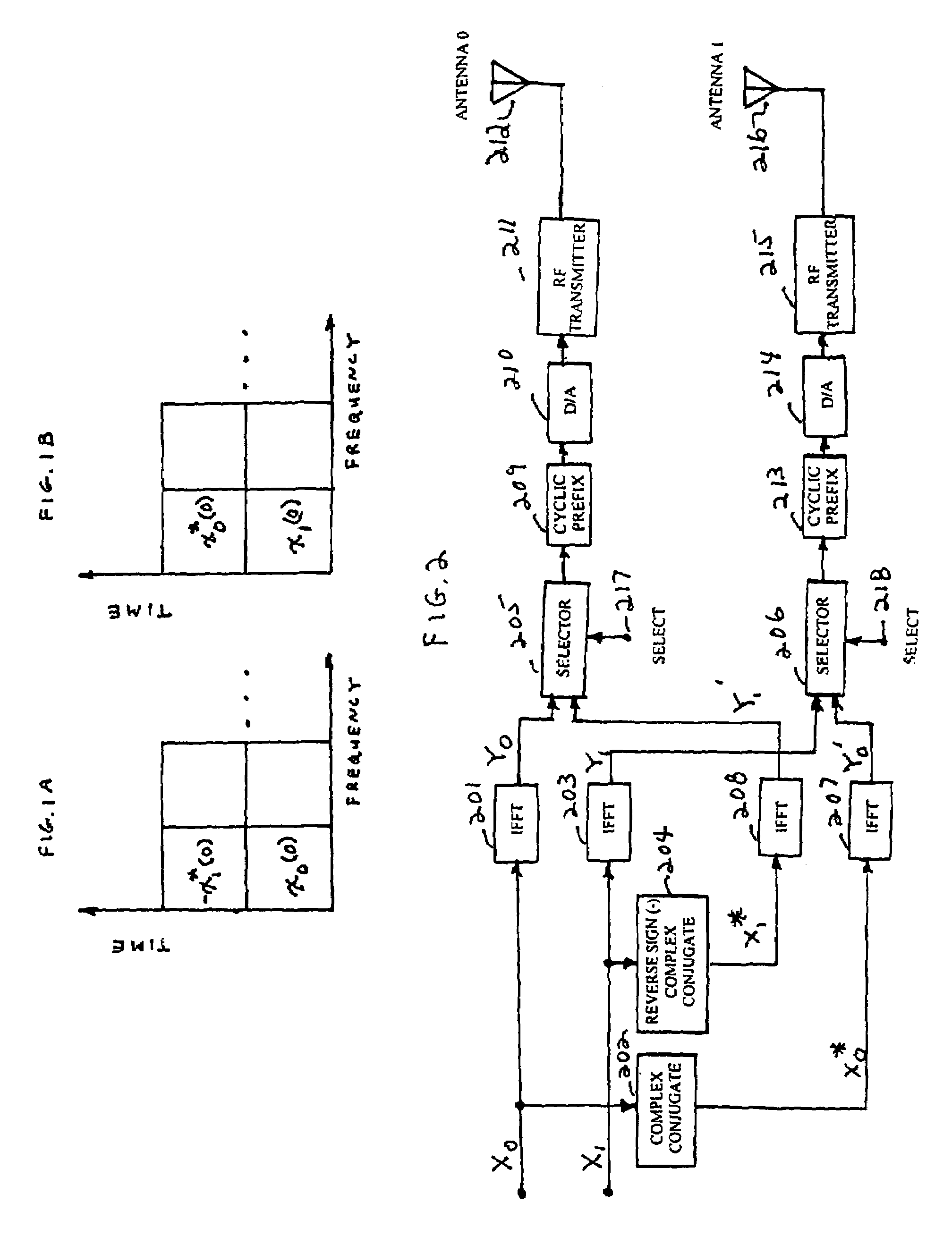Orthogonal frequency division multiplexing transmit diversity system for frequency-selective fading channels
a frequency-selective fading channel and transmit diversity technology, applied in the field of wireless communications, can solve the problems of transmission rate loss, transmission rate loss, rate loss, etc., and achieve the effect of increasing transmit diversity and reducing complexity in implementation
- Summary
- Abstract
- Description
- Claims
- Application Information
AI Technical Summary
Benefits of technology
Problems solved by technology
Method used
Image
Examples
Embodiment Construction
[0016]FIG. 1A graphically illustrates the pairing of signals in time for use in an embodiment of the invention in transmitting from a first antenna, antenna 0, in an OFDM transmit diversity system. Specifically, shown are signal components x0 (0) and −x1*(0) along the vertical time axis prior to their inverse fast Fourier transform (IFFT) and where the * denotes the complex conjugate.
[0017]Similarly, FIG. 1B graphically illustrates the pairing of signals in time for use in an embodiment of the invention in transmitting from a second antenna, antenna 1, in an OFDM transmit diversity system. Specifically, shown are signal components x1 (0) and x0*(0) along the vertical time axis prior to their inverse fast Fourier transform (IFFT and where the * denotes the complex conjugate.
[0018]Thus, in a first OFDM interval, the signal pairing is such that signal component x0(0) is transmitted from antenna 0 and signal x1(0) is transmitted from antenna 1, and in a second OFDM interval, the signal ...
PUM
 Login to View More
Login to View More Abstract
Description
Claims
Application Information
 Login to View More
Login to View More - R&D
- Intellectual Property
- Life Sciences
- Materials
- Tech Scout
- Unparalleled Data Quality
- Higher Quality Content
- 60% Fewer Hallucinations
Browse by: Latest US Patents, China's latest patents, Technical Efficacy Thesaurus, Application Domain, Technology Topic, Popular Technical Reports.
© 2025 PatSnap. All rights reserved.Legal|Privacy policy|Modern Slavery Act Transparency Statement|Sitemap|About US| Contact US: help@patsnap.com



